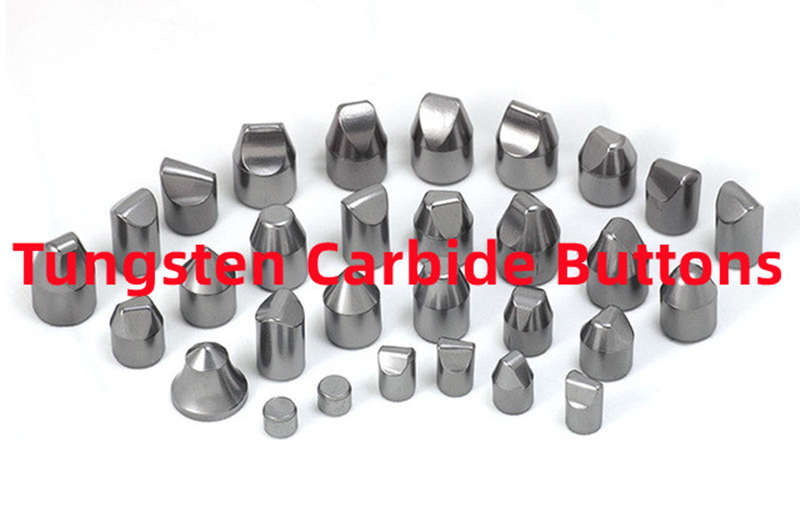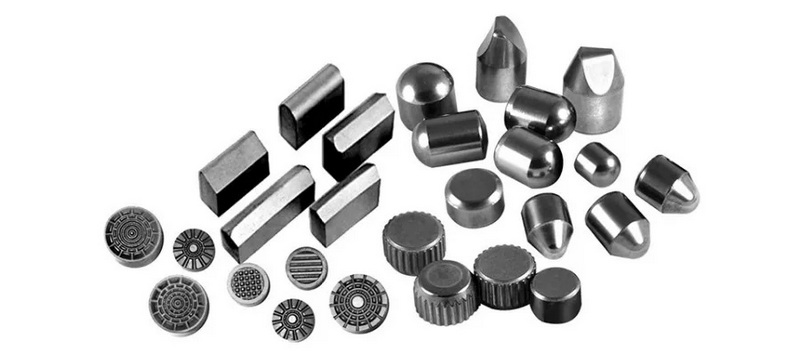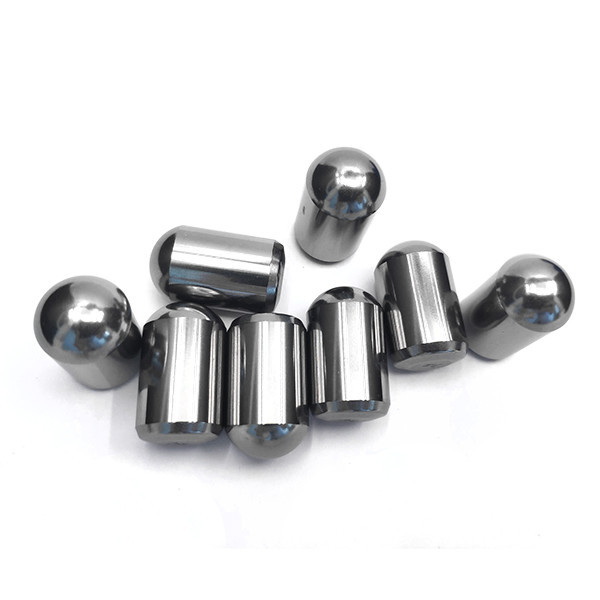Content Menu
● Introduction to Tungsten Carbide
>> Chemical Composition
● Properties of Tungsten Carbide
>> Physical Properties
● Applications of Tungsten Carbide
>> Industrial Applications
● Coating Processes for Tungsten Carbide
>> Advantages of Coatings
● Aerospace Applications
>> Benefits in Aerospace
● Oil and Gas Industry Applications
>> Benefits in Oil and Gas
● Jewelry Applications
>> Benefits in Jewelry
● Myths and Facts About Tungsten Carbide
>> Misconceptions in Jewelry
● Recycling Tungsten Carbide
>> Recycling Methods
● Conclusion
● FAQs
>> 1. What is Tungsten Carbide?
>> 2. How is Tungsten Carbide Used in Industry?
>> 3. Is Tungsten Carbide Indestructible?
>> 4. Can Tungsten Carbide Be Recycled?
>> 5. What Are the Benefits of Tungsten Carbide in Jewelry?
● Citations:
Tungsten carbide is a compound made from tungsten and carbon, renowned for its exceptional hardness, wear resistance, and durability. It is widely used in various industrial applications, including cutting tools, wear parts, and even jewelry. In this article, we will delve into the properties, applications, and myths surrounding tungsten carbide, exploring whether it is truly as robust as claimed.

Introduction to Tungsten Carbide
Tungsten carbide is formed by combining tungsten and carbon atoms in a precise ratio, typically resulting in a composition of about 94% tungsten and 6% carbon by weight. This compound is often mixed with metallic binders like cobalt or nickel to enhance its toughness and ductility, creating a cermet (ceramic-metallic composite).
Chemical Composition
The chemical composition of tungsten carbide is crucial for its performance. The addition of binders allows it to maintain its hardness while gaining resilience, making it suitable for applications where both strength and flexibility are required.
Properties of Tungsten Carbide
Tungsten carbide exhibits several key properties that make it invaluable in industrial settings:
- Hardness: It ranks second only to diamond on the Mohs scale of hardness, providing exceptional wear resistance.
- Thermal Stability: Tungsten carbide maintains its structural integrity over a wide temperature range, making it ideal for high-temperature applications.
- Corrosion Resistance: It offers good resistance to corrosion, which is beneficial in environments where exposure to chemicals is common.
Physical Properties
Its high density contributes to its stability and wear resistance in high-impact environments. The material's thermal conductivity ensures efficient heat dissipation, which is crucial in high-temperature operations.
Applications of Tungsten Carbide
Tungsten carbide is used in a variety of applications due to its unique properties:
- Cutting Tools: It is widely used in drill bits, milling tools, and saw blades for its ability to maintain sharpness under high stress.
- Wear Parts: Components like pump components, valve seats, and liners benefit from its wear resistance.
- Jewelry: Tungsten carbide rings are popular for their durability and scratch resistance.
Industrial Applications
In industries such as aerospace, oil drilling, and construction, tungsten carbide coatings are applied to protect critical components from wear and tear.

Coating Processes for Tungsten Carbide
The application of tungsten carbide coatings involves advanced processes:
- High-Velocity Oxygen Fuel (HVOF) Process: This method produces dense coatings with superior wear resistance by accelerating carbide particles at high velocities.
- Detonation Gun (D-Gun) Process: It uses controlled detonations to create exceptionally dense and well-bonded coatings.
Advantages of Coatings
These coatings enhance the durability of components by providing a protective layer that resists wear and corrosion, extending the lifespan of machinery and tools.
Aerospace Applications
Tungsten carbide coatings play a critical role in the aerospace industry by enhancing the wear resistance and corrosion protection of aircraft components. For instance, they are used on turbine blades, compressor seals, and landing gear components to improve reliability and extend service life[2][7].
Benefits in Aerospace
- Improved Fatigue Life: Tungsten carbide coatings help control fatigue in components like flap tracks and landing gears, ensuring smoother takeoffs and landings[2].
- Corrosion Resistance: These coatings provide significant corrosion protection, increasing the longevity of turbine engines and other critical components[2].
Oil and Gas Industry Applications
In the oil and gas sector, tungsten carbide coatings are essential for protecting drilling equipment and production components. They extend the life of drill bits, valve stems, and pump components operating in abrasive environments[1].
Benefits in Oil and Gas
- Wear Resistance: Tungsten carbide coatings reduce wear on equipment, minimizing downtime and maintenance costs.
- Corrosion Protection: They protect against corrosion in high-pressure environments, ensuring the integrity of drilling and production equipment.
Jewelry Applications
Tungsten carbide is also used in jewelry, particularly in men's rings, due to its durability and scratch resistance. It offers a hypoallergenic alternative to traditional metals and requires minimal maintenance[3][8].
Benefits in Jewelry
- Durability: Tungsten carbide rings are resistant to scratches and corrosion, maintaining their appearance over time.
- Hypoallergenic: They are suitable for individuals with sensitive skin, as they are generally hypoallergenic.
Myths and Facts About Tungsten Carbide
Several myths surround tungsten carbide, particularly in the context of jewelry:
- Indestructible: While tungsten carbide is very hard, it is not indestructible and can break under extreme force.
- Pure Tungsten Rings: Tungsten rings are actually made from tungsten carbide, not pure tungsten, as pure tungsten is too brittle for jewelry.
Misconceptions in Jewelry
Tungsten carbide rings are often classified as "cermet" rather than pure metal, due to their composition of metallic and non-metallic elements.
Recycling Tungsten Carbide
Recycling tungsten carbide is crucial due to its extensive use in cutting and machining tools. Two primary methods for recycling are the Electrolytic Method and the Zinc Smelting Method[5].
Recycling Methods
- Electrolytic Method: This method is efficient for waste materials with high cobalt content, offering low reagent and energy consumption.
- Zinc Smelting Method: Suitable for low-cobalt content waste, it involves high temperatures to recover tungsten carbide.
Conclusion
Tungsten carbide is indeed a real and highly versatile material, renowned for its hardness, wear resistance, and thermal stability. Its applications span from industrial cutting tools to durable jewelry, making it a valuable resource in modern manufacturing and consumer goods.

FAQs
1. What is Tungsten Carbide?
Tungsten carbide is a compound made from tungsten and carbon, known for its exceptional hardness and wear resistance. It is often mixed with metallic binders like cobalt to enhance its toughness.
2. How is Tungsten Carbide Used in Industry?
Tungsten carbide is used in cutting tools, wear parts, and coatings due to its ability to withstand high temperatures and maintain sharpness under stress.
3. Is Tungsten Carbide Indestructible?
No, while tungsten carbide is very hard, it is not indestructible and can break under extreme force, especially in the case of tungsten carbide rings.
4. Can Tungsten Carbide Be Recycled?
Yes, tungsten carbide can be recycled. Worn-out tools and scrap material can be reclaimed and reused, reducing waste and conserving resources.
5. What Are the Benefits of Tungsten Carbide in Jewelry?
Tungsten carbide jewelry, such as rings, offers durability, scratch resistance, and a hypoallergenic quality, making it suitable for daily wear.
Citations:
[1] https://www.linde-amt.com/resource-library/articles/tungsten-carbide
[2] https://www.ep-coatings.com/news/applications-of-tungsten-carbide-coatings-in-the-aerospace-industry.html
[3] https://www.thorum.com/blogs/log/15-benefits-of-tungsten-rings-the-ultimate-durable-mens-jewelry
[4] https://shop.machinemfg.com/tungsten-vs-tungsten-carbide-key-differences/
[5] https://www.carbide-products.com/blog/tungsten-carbide-recycling/
[6] https://carbideprocessors.com/pages/carbide-parts/tungsten-carbide-properties.html
[7] https://grafhartmetall.com/en/tungsten-carbide-is-helping-modern-aircraft-fly-better/
[8] https://engaged.robbinsbrothers.com/benefits-of-mens-tungsten-carbide-rings-and-wedding-bands
[9] https://www.tungco.com/insights/blog/why-use-tungsten-carbide-over-other-metals/
[10] https://www.itia.info/wp-content/uploads/2023/07/ITIA_Newsletter_2019_08.pdf
[11] https://www.tungco.com/insights/blog/5-tungsten-carbide-applications/
[12] https://www.samaterials.com/content/how-are-tungsten-alloys-used-in-the-aerospace-industry.html
[13] https://www.larsonjewelers.com/pages/tungsten-rings-pros-cons-facts-myths
[14] https://industrialmetalservice.com/metal-university/differentiating-tungsten-carbide-vs-steel-and-other-tooling/
[15] https://www.linkedin.com/pulse/how-recycle-tungsten-carbide-yeyi-hardfacing-material
[16] https://www.allied-material.co.jp/en/techinfo/tungsten_carbide/features.html
[17] https://www.carbide-usa.com/tungsten-carbide-in-the-aerospace-industry/
[18] https://www.justmensrings.com/blogs/justmensrings/what-are-the-benefits-of-tungsten-carbide-rings
[19] https://www.syalons.com/2024/07/08/silicon-carbide-vs-tungsten-carbide-wear-applications/
[20] https://www.sandvik.coromant.com/en-us/services/recycling/faq-carbide-recycling
















